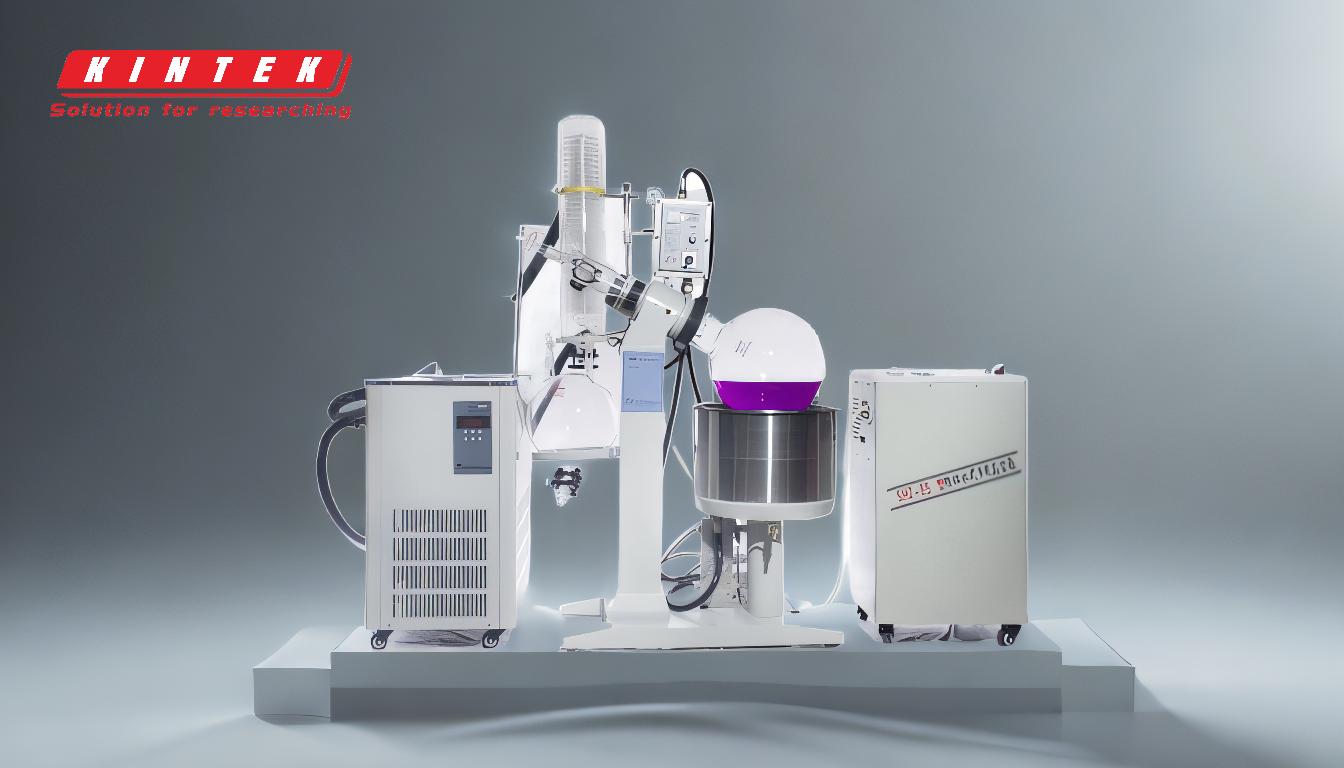Rotary evaporation is an efficient method for evaporating solvents due to its ability to combine reduced pressure, increased surface area, and controlled temperature. By rotating the flask, a thin liquid film is formed on the inner surface, maximizing the evaporation surface area and speeding up the process. The reduced pressure lowers the boiling point of the solvent, allowing evaporation to occur at lower temperatures, which minimizes the risk of thermal degradation. Additionally, the high-efficiency condenser rapidly cools and collects the solvent vapor, further enhancing efficiency. These features make rotary evaporation faster, safer, and more energy-efficient compared to traditional methods, particularly for heat-sensitive materials.
Key Points Explained:

-
Increased Surface Area Through Rotation:
- The rotating motion of the flask creates a thin, uniform liquid film on the inner surface.
- This maximizes the surface area exposed to the reduced-pressure environment, accelerating evaporation.
- The thin film also reduces the risk of bumping or flash boiling, which can lead to sample loss or contamination.
-
Reduced Pressure for Lower Boiling Points:
- Rotary evaporators operate under reduced pressure, which lowers the boiling point of the solvent.
- This allows solvents to evaporate at lower temperatures, reducing the risk of thermal degradation, especially for heat-sensitive materials like biological products.
- Lower operating temperatures also contribute to energy efficiency compared to traditional boiling methods.
-
High-Efficiency Condensation:
- The solvent vapor is rapidly cooled by a high-efficiency glass condenser.
- This ensures quick recovery of the solvent, preventing re-evaporation and improving the overall efficiency of the process.
- The condensed solvent is collected separately, making it easy to recover and reuse.
-
Faster Processing Time:
- Rotary evaporation significantly reduces distillation time compared to traditional methods. For example, it can reduce the time required to eliminate ether from several hours to approximately 20 minutes.
- The combination of increased surface area, reduced pressure, and efficient condensation ensures thorough and rapid evaporation.
-
Compact and User-Friendly Design:
- Rotary evaporators are designed with a compact structure, making them suitable for both laboratory and production environments.
- Features like leakproofness, ease of observation, and humanized design enhance usability and reliability.
- The absence of metal ion pollution ensures the purity of the extracted materials.
-
Versatility and Applications:
- Rotary evaporators are widely used for concentration, crystallization, drying, separation, and solvent recovery.
- They are particularly effective for processing heat-sensitive materials, such as biological products, due to their ability to operate at lower temperatures.
- Their efficiency and versatility make them indispensable in fields like pharmaceuticals, chemistry, and food science.
In summary, rotary evaporation is efficient because it combines multiple factors—increased surface area, reduced pressure, rapid condensation, and controlled temperature—into a single, streamlined process. These features make it faster, safer, and more energy-efficient than traditional methods, while also being versatile enough to handle a wide range of applications.
Summary Table:
| Key Feature | Benefit |
|---|---|
| Increased Surface Area | Maximizes evaporation speed and reduces bumping risks. |
| Reduced Pressure | Lowers boiling points, minimizing thermal degradation. |
| High-Efficiency Condensation | Rapidly cools and recovers solvents, improving efficiency. |
| Faster Processing Time | Reduces distillation time significantly (e.g., ether removal in 20 minutes). |
| Compact and User-Friendly | Suitable for labs and production, with leakproof and easy-to-use designs. |
| Versatility | Ideal for concentration, drying, separation, and heat-sensitive materials. |
Interested in enhancing your lab's efficiency with rotary evaporation? Contact us today to learn more!









